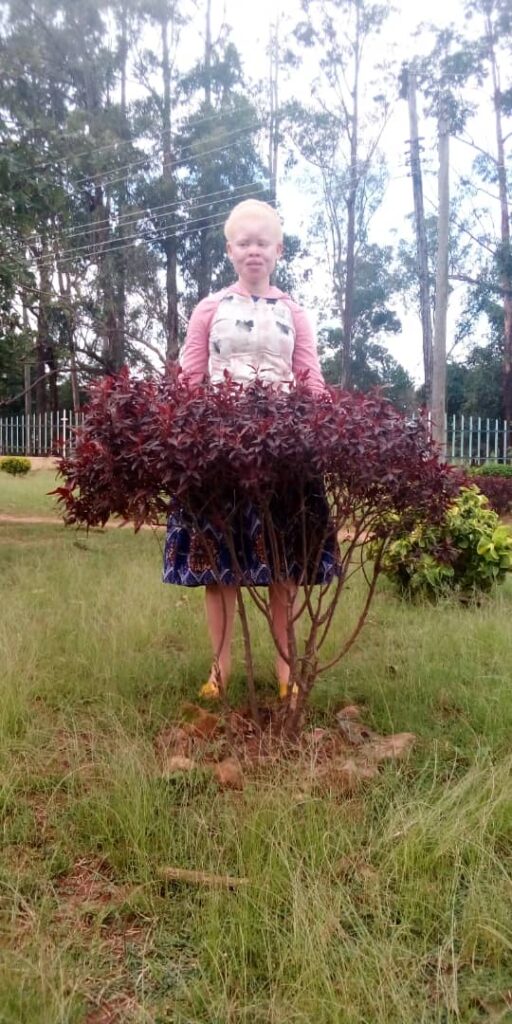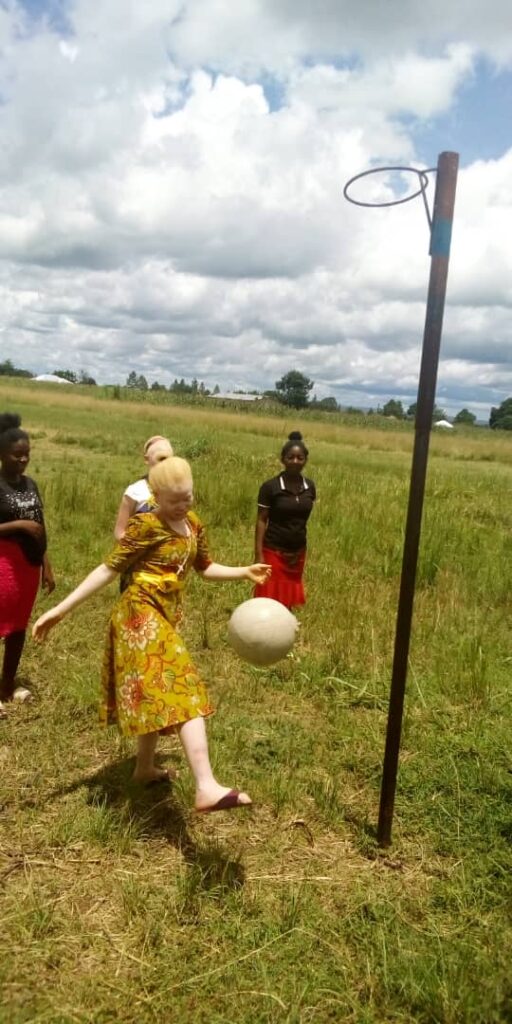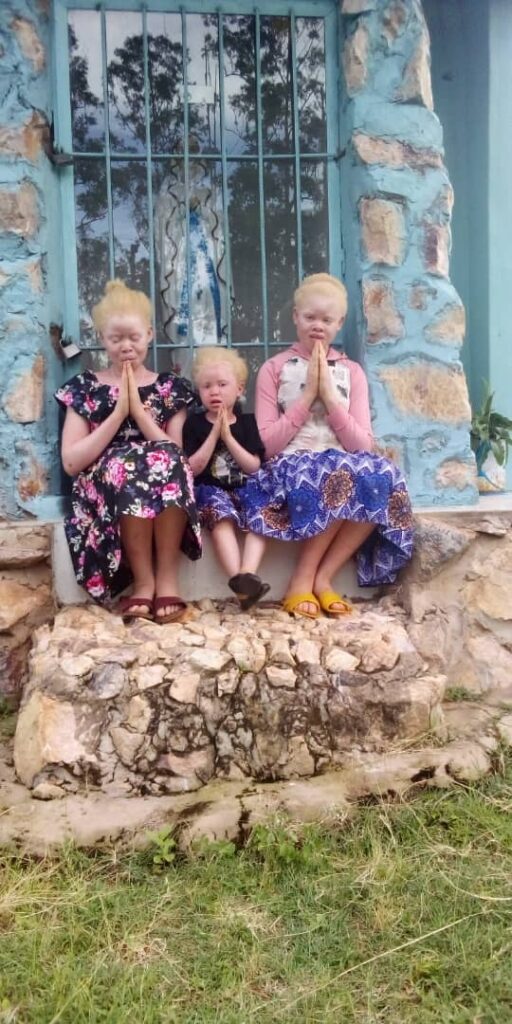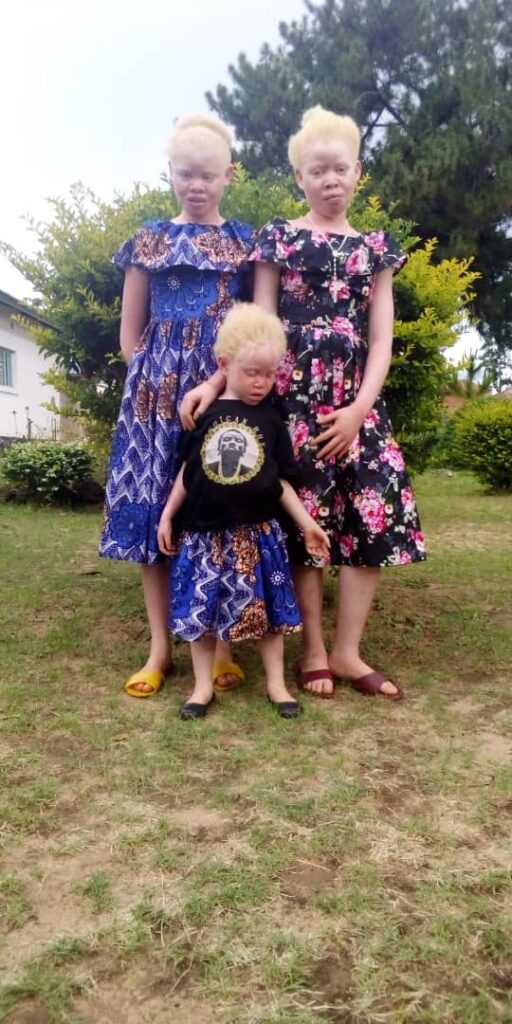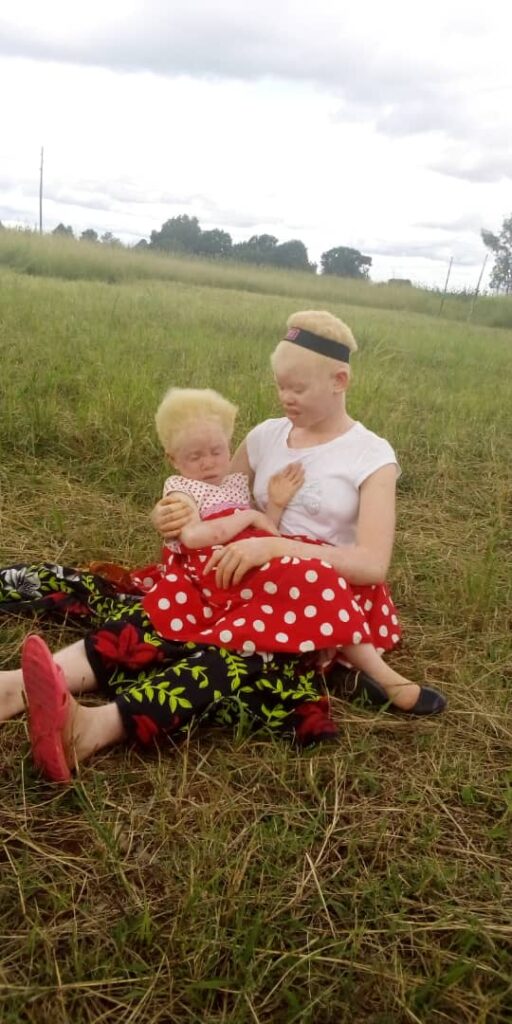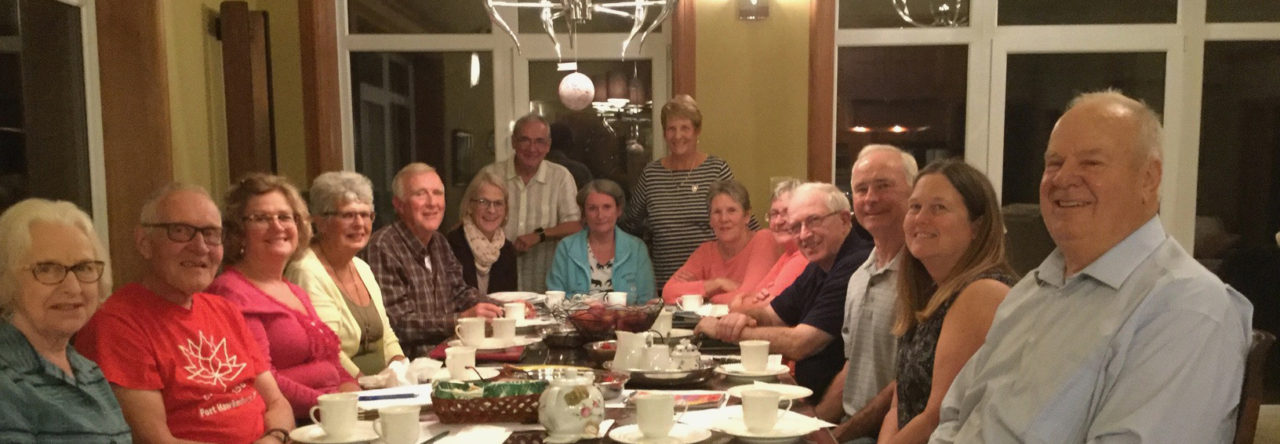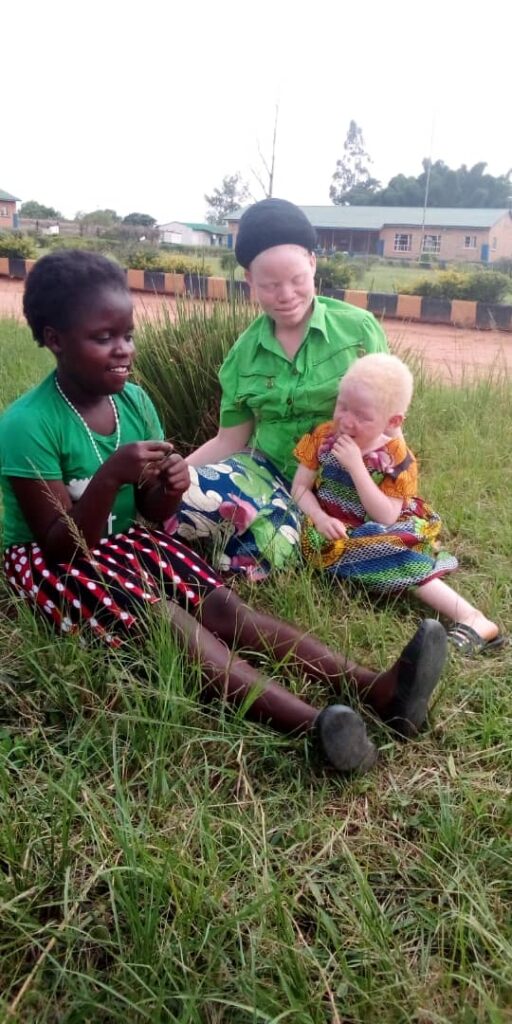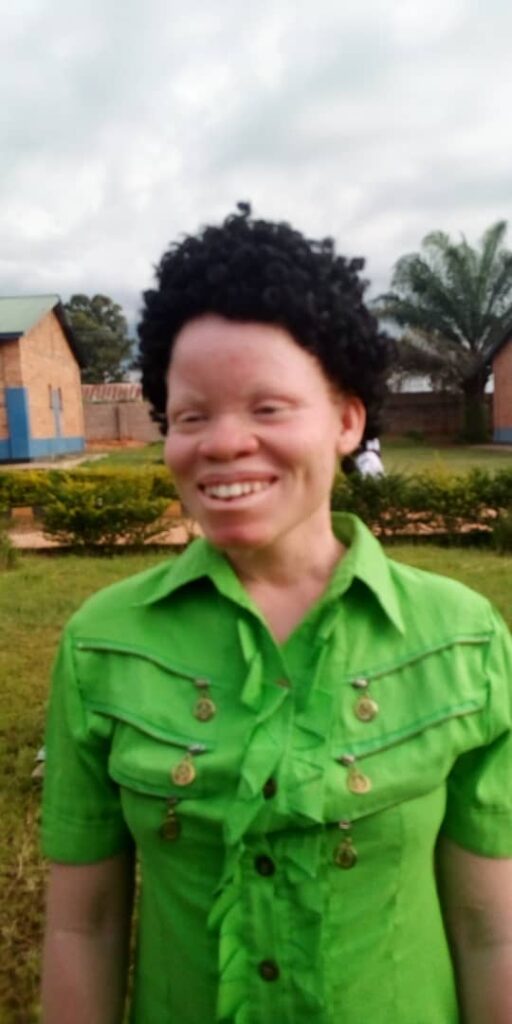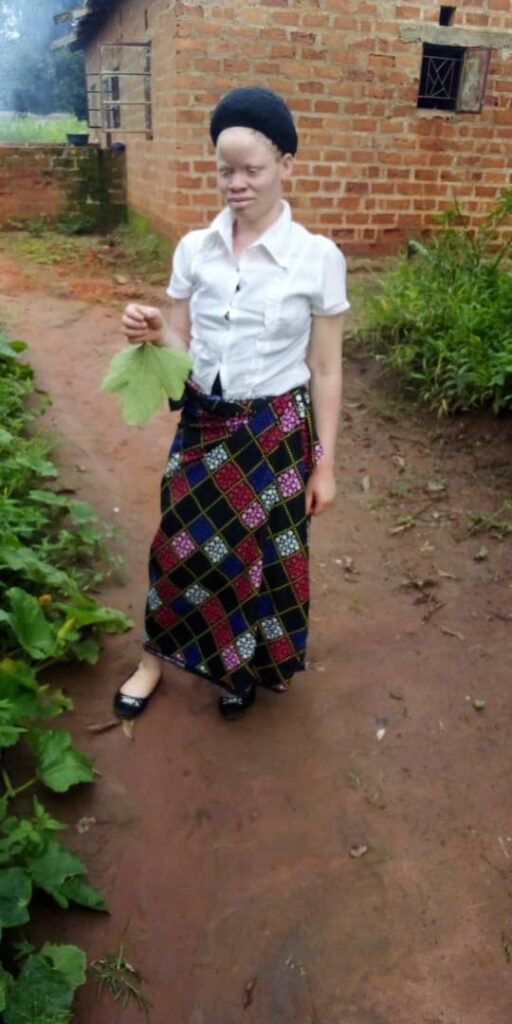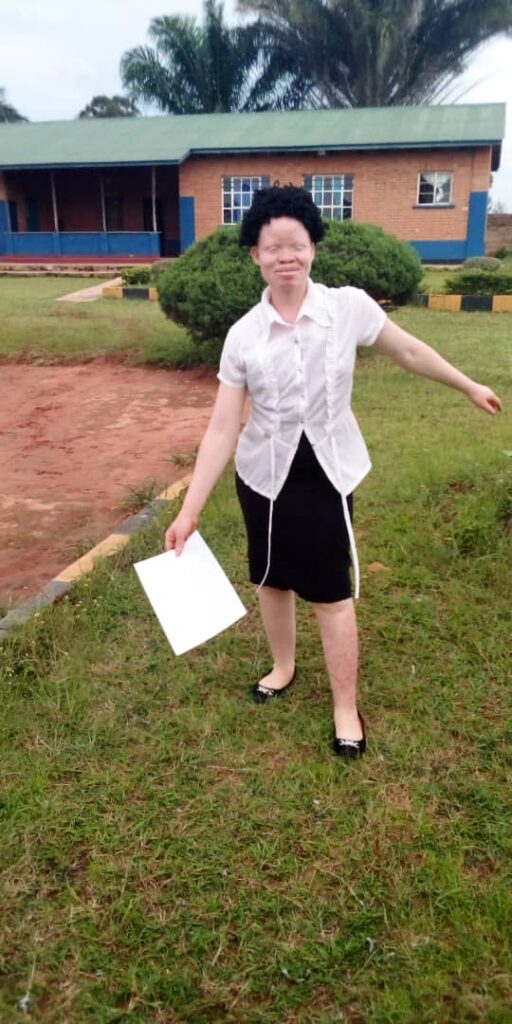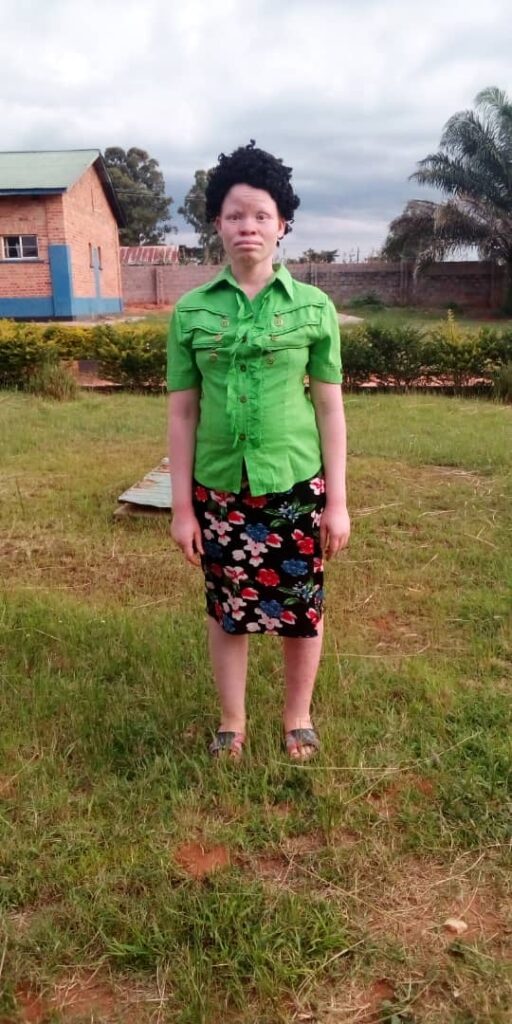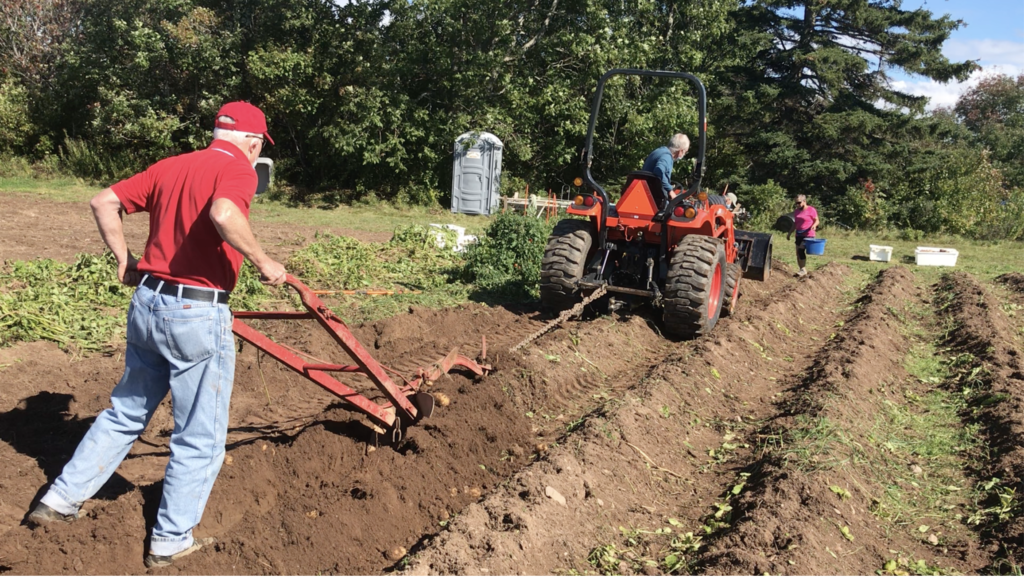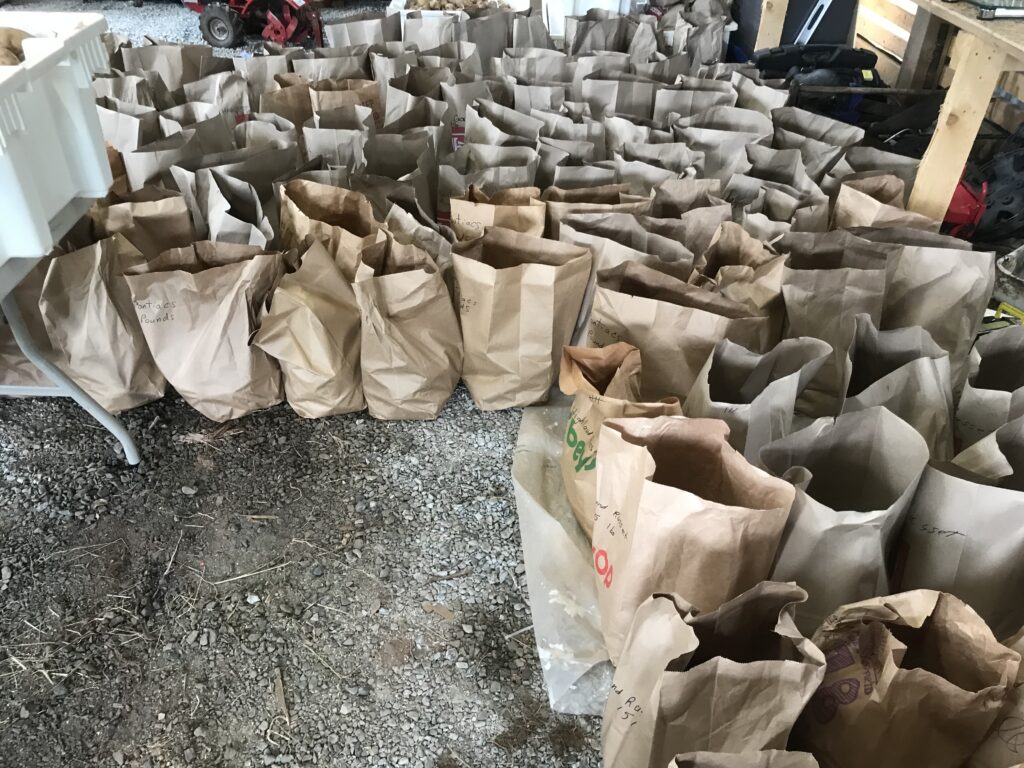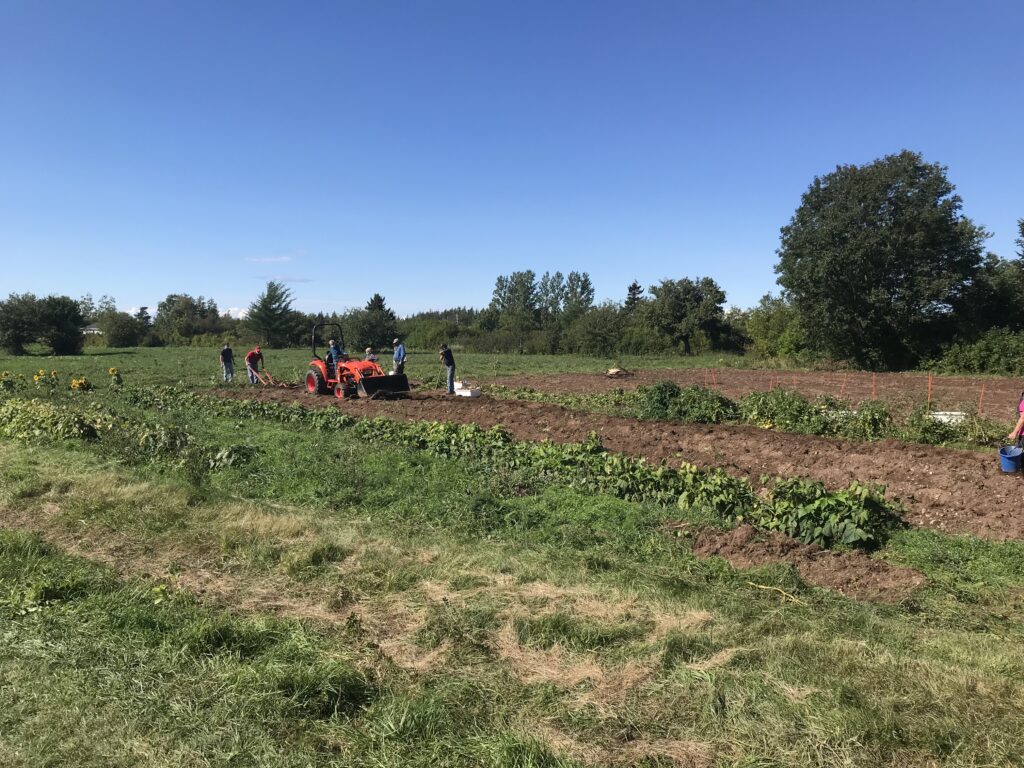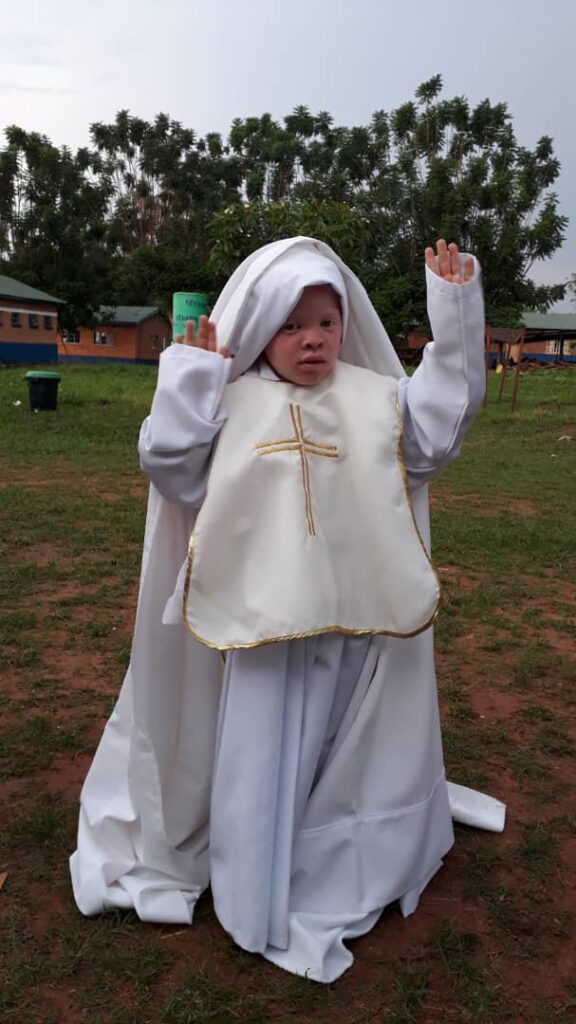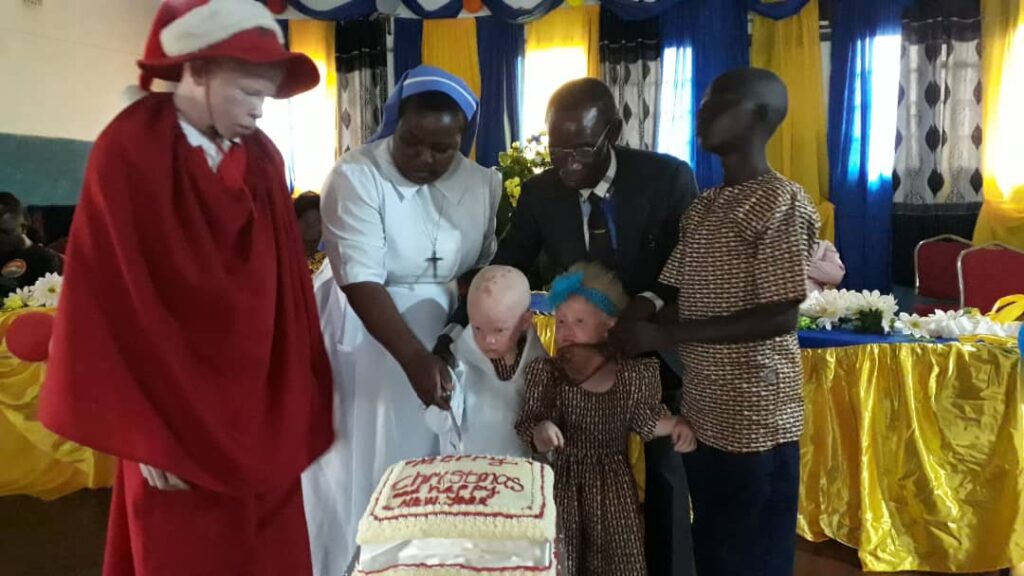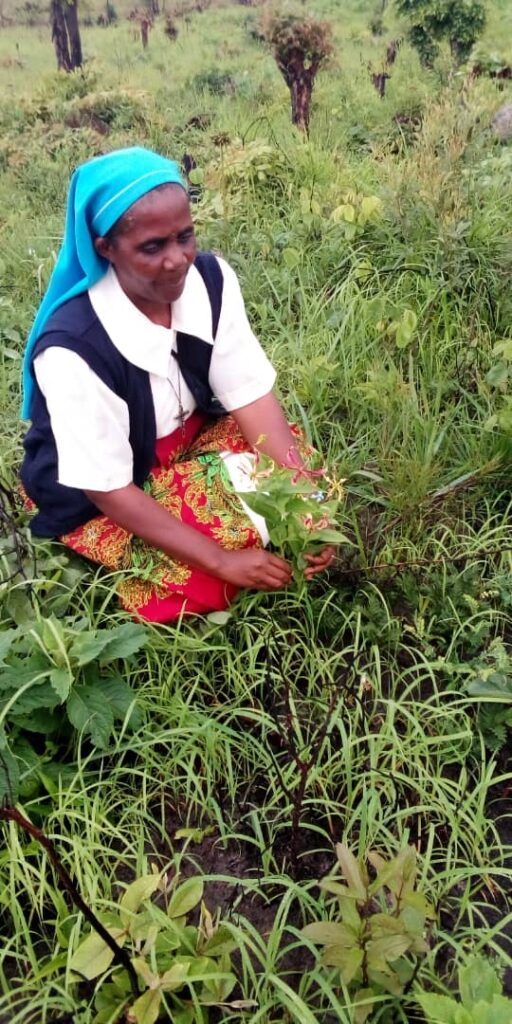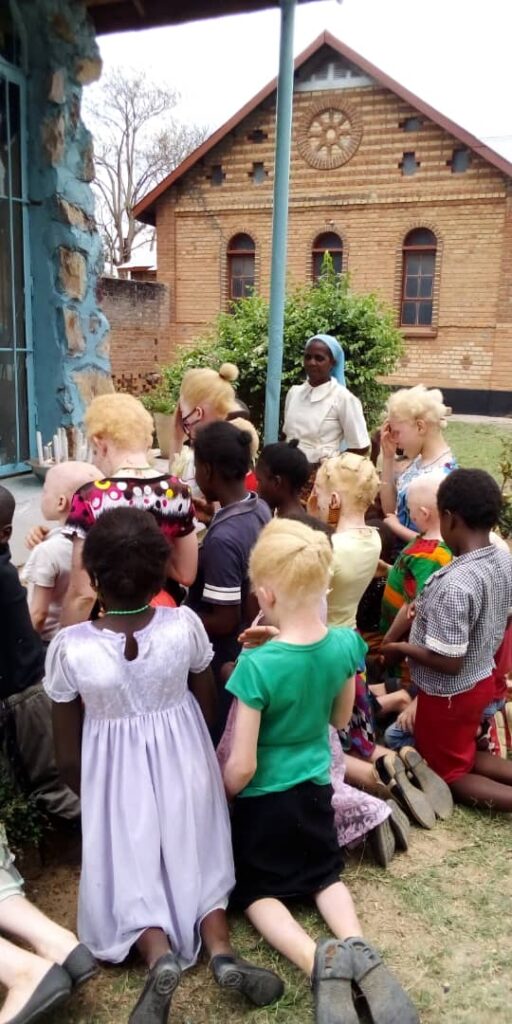I am Beatrice Chipulu, an albino child aged 15 years. My family has three girls and four boys. All the boys are black and all the girls are albino and we girls all suffer from low vision. I am the second born in the family of Prosper and Grace. Both my parents are black but with a brownish skin. Albinism was inherited from both our parents. On our mother’s side, l was told, my great grandparents had one albino child and on my father’s side my aunt has three albino children and they live in the Copper Belt of Zambia.
My father is not educated and has never stepped his foot in the classroom, but he knows how to write his name. Despite his lack of classroom learning he is an expert in fishing and he has three nets and a boat. He was taught these skills by the fishermen he worked with. He is proud of his ability to provide for all his family.
My mother reached her secondary level grade nine and she then married my father. Last year their marriage was blessed in church at Christmas, it was a great celebration. She is good at knitting especially baby layettes and people come to buy these beautiful sets. She sometimes works selling my father’s fish. Our family home is at the shores of Lake Bangweulu the only lake in Zambia which doesn’t share with other countries. Bream is the species of fish found in this river.
My father and his family love us very much, especially our paternal grandmother Elizabeth who truly loves us totally. My mother’s family were not very welcoming to us three albino girls. Our mother Grace was happy to send us for extended amounts of time, to her mother in law’s home for meals, bathing and daily living. Our grandmother Elizabeth understood my mother’s attitude toward us for Grace preferred for her children to live with their paternal grandmother and left us there for months. Eventually our father joined us at our grandmother’s home.
Grandma Elizabeth taught us all domestic works, she taught us a love of flowers and vegetable gardening. She also encouraged us to associate with others despite the beliefs and myths perpetrated concerning albinos. The greatest gift she has given to us is praying the rosary. Grandma Elizabeth and my father are strong Catholics.
I entered St Mary’s Special School with the help of our parish catechist who once lived in Kawambwa and knew about the special school for the visually impaired and blind. He communicated this to my grandma Elizabeth. In 2015 when I was 8 and Abigail was 6 she took us to school. Abigail was in the pre-school for two years. In 2022, Abigail is in Grade 6, and am in Grade 8. When we left home to go to the St Mary’s School, our youngest sister Hellen Chipulu was very upset since she was separated from her sisters when we went to the Kawambwa school. At the age of two years seven months, she joined the Kawambwa school after my father talked to Sr Agnes and explained the situation.
The People in our village were challenged by our unusual confidence and activeness. It is common for albinos to be shunned and isolated from their community members because of the superstitions perpetrated by witchcraft and black magic. Grandma Elizabeth taught us that we were clever, loveable persons. With this confidence in our hearts, we became involved in community activities. We can dance all sorts of dances, sing and are very good story tellers. We have joined the Holy Childhood group at church, we read in church and share the word of God. Our interaction with our people has unveiled volume and volume of our being. Everyone is surprised as to our abilities. We are well treated and loved, because, “We have provided a mirror.”
My dream is to be social worker and fight for the rights of the disabled and the vulnerable. Parents and communities need to be educated concerning the cause of albinism and understand albinos are not supernatural or dangerous. I have accepted my condition of albinism and I encourage my young sister Abigail to accept herself as well.
l love St Mary’s School so much for it has enabled me to fulfill my dream, because, “The sky is the limit”.
Inverness County Cares (ICC) is a local charitable organization, founded in 2012 and based in Inverness County, NS, Canada. ICC works in partnership with Chalice.ca, a Canadian charity, based in Bedford, Nova Scotia. Chalice provides guidance and assistance to help us provide a better life for the children at the Kawambwa schools. The Kawambwa Project involves supporting two schools for albino and visually impaired students, in Northern Zambia. Inverness County Cares always welcomes new members. Individuals who wish to donate, can use the donate button on our website https://invernesscountycares.com When using E-transfer, please include your mailing address for CRA tax receipts and a thank you message. E-transfer address: [email protected] or send a cheque to Inverness County Cares, 5414 Route 19, Judique, NS, Canada, B0E1P0. Taxation receipts provided for USA and Canada.
